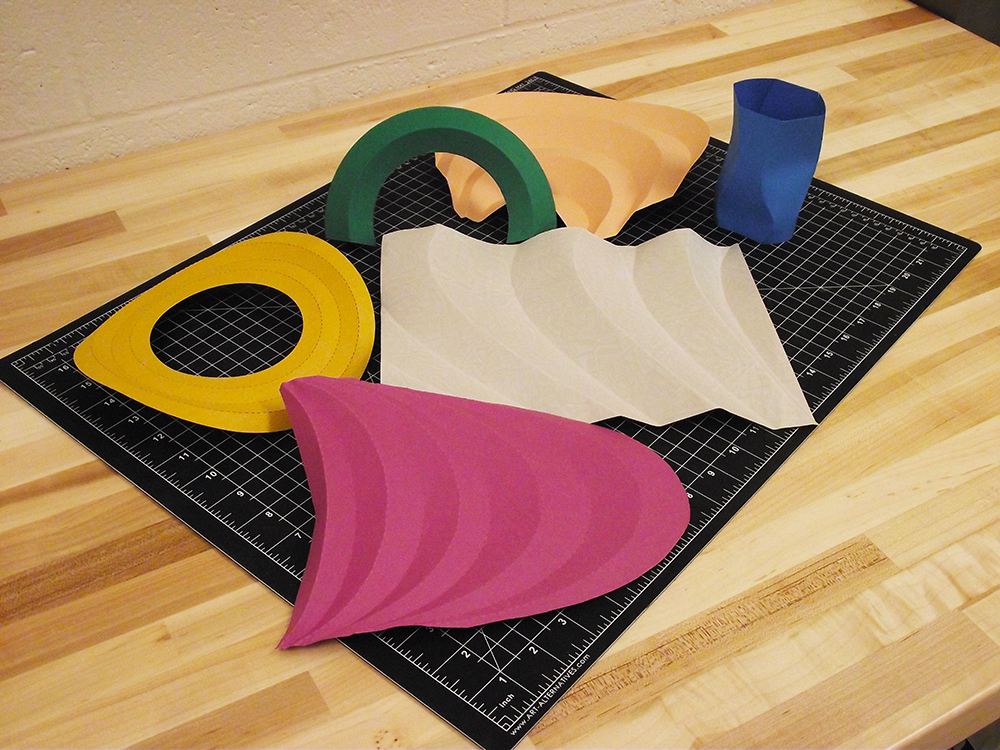Curved-crease, origami-inspired structures
Origami, the art of folding paper, has recently served as an inspiration for solving problems in engineering. My research focuses on applying origami to load-bearing structures in order to better understand how engineers could use the properties of folded sheets in their designs to create safer, more economical, and multi-use designs.

My research is specifically interested in thin sheets folded about arbitrarily curved creases. Curved-crease origami is unique in that the curved creases result in curved sheets. This sheet curvature gives the origami greater bending strength than a flat plate along with a variety of other unique properties.
We know that the structural behavior of curved-crease origami is highly anisotropic. This means that there are ways one could deform an origami structure that require only small loads and ways that require large loads.

In order to fully understand the behavior of curved-crease origami, we must first understand their anisotropic properties.
Learn more about my past and current projects below: